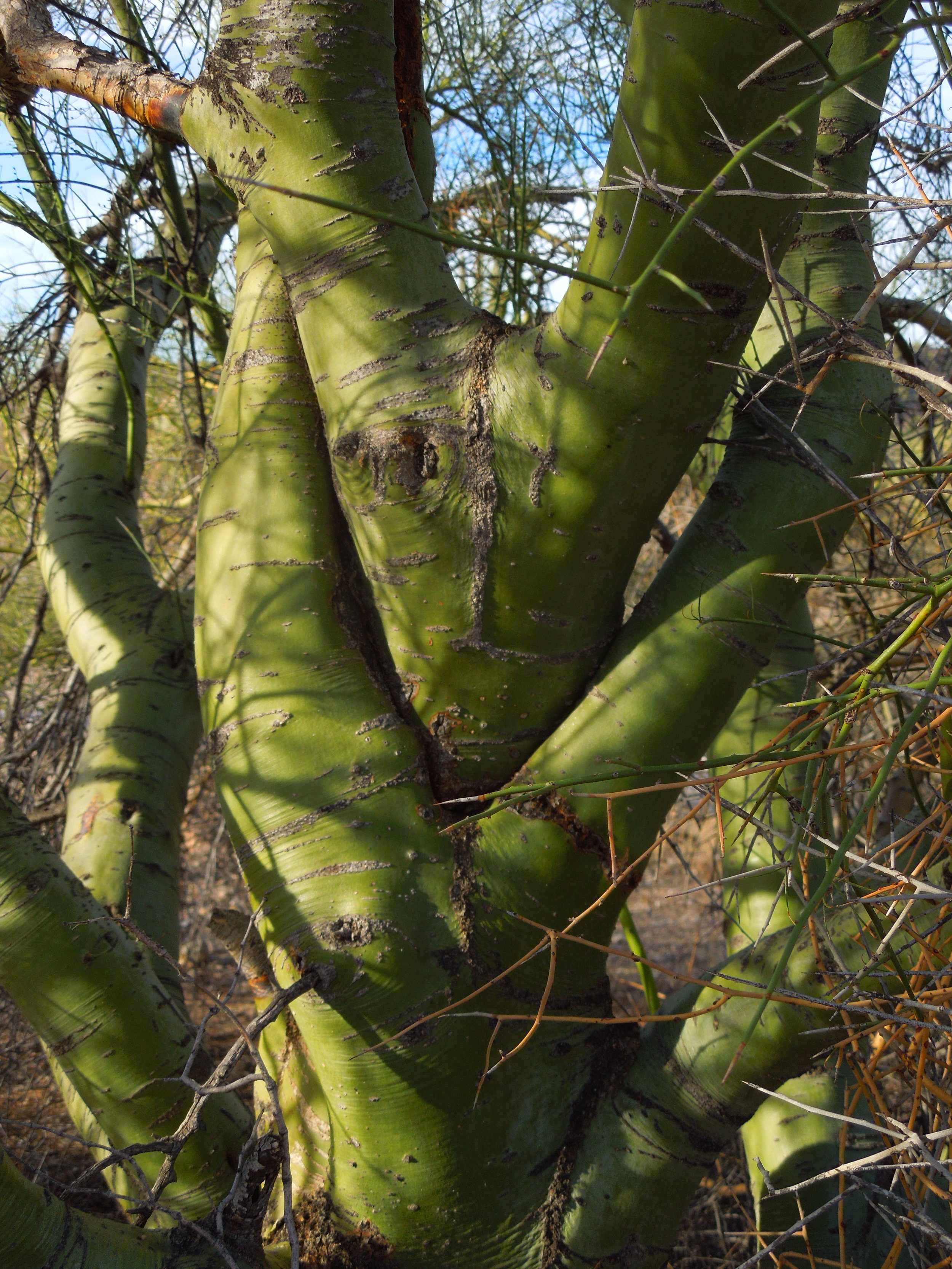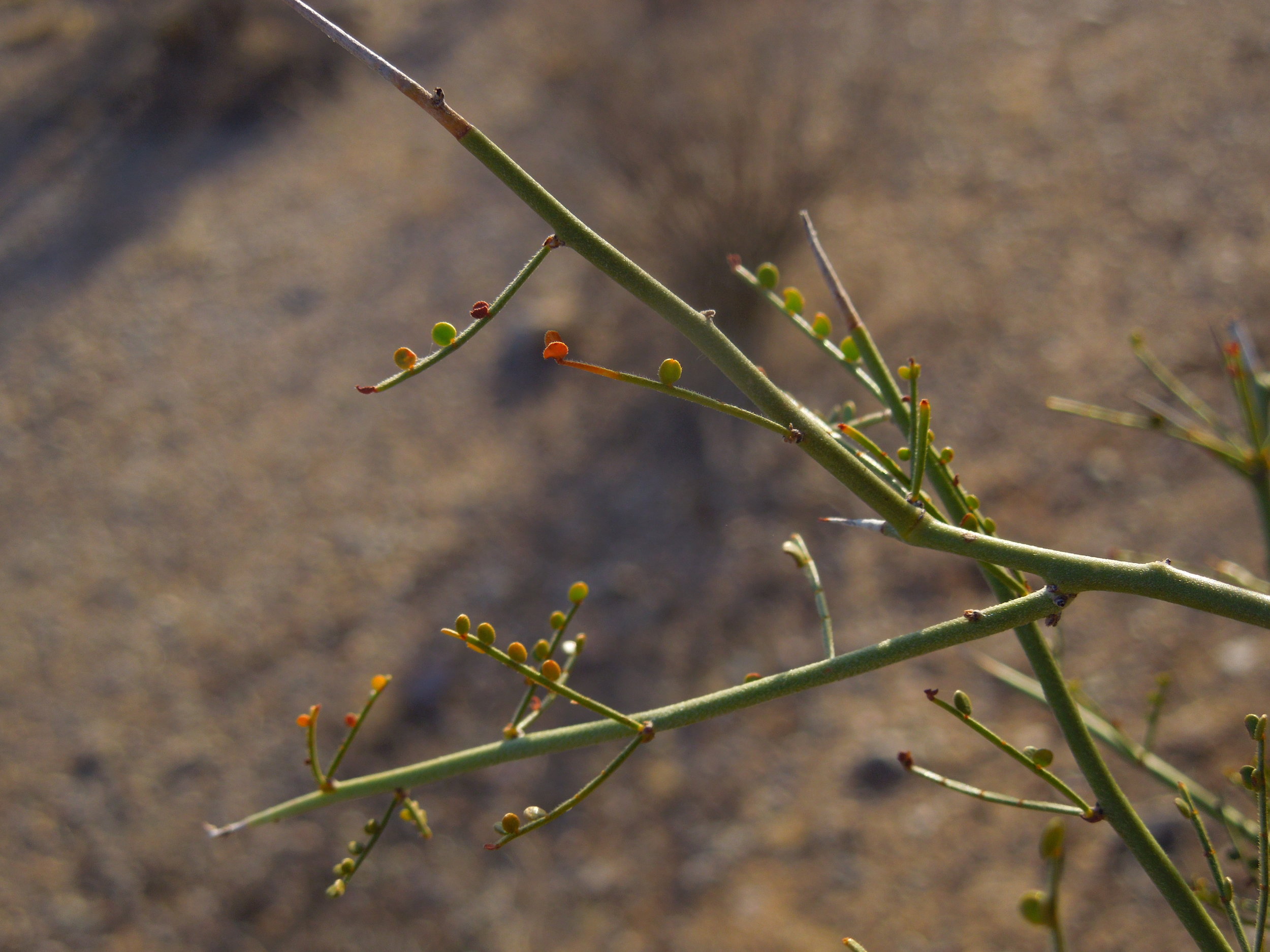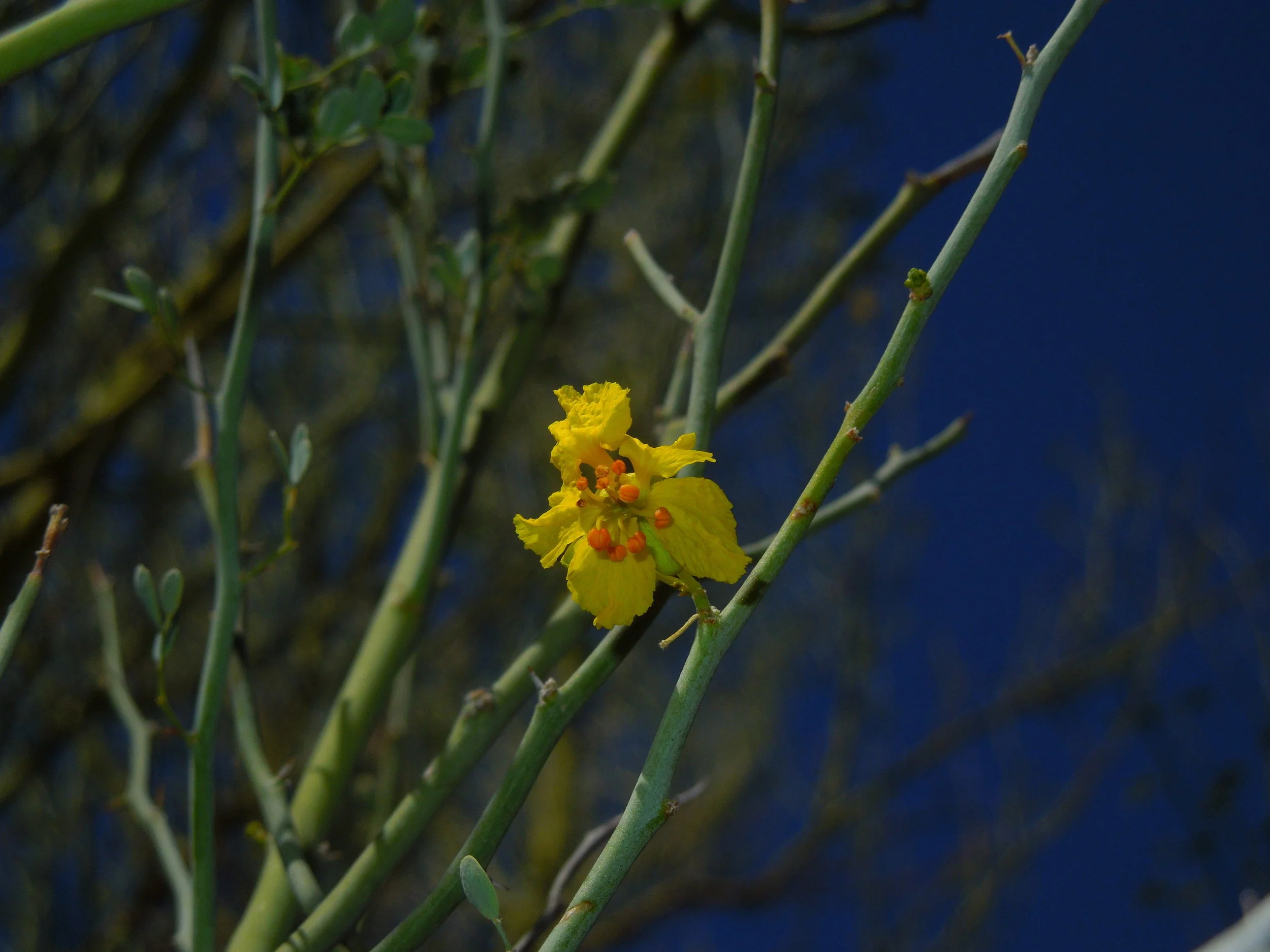One of the first plants I noticed upon arriving in the Sonoran Desert were these small spiny trees without any leaves. The reason they caught my eye was that every inch of them was bright green. It was impossible to miss against the rusty brown tones of the surrounding landscape. It didn’t take long to track down the identity of this tree. What I was looking at was none other than the palo verde (Parkinsonia florida).
Palo verde belong to a small genus of leguminous trees. Parkinsonia consists of roughly 12 species scattered about arid regions of Africa and the Americas. The common name of “palo verde” is Spanish for “green stick.” And green they are! Like I said, every inch of this tree gives off a pleasing green hue. Of course, this is a survival strategy to make the most of life in arid climates.
Despite typically being found growing along creek beds, infrequent rainfall limits their access to regular water supplies. As such, these trees have adapted to preserve as much water as possible. One way they do this is via their deciduous habit. Unlike temperate deciduous trees which drop their leaves in response to the changing of the seasons, palo verde drop their leaves in response to drought. And, as one can expect from a denizen of the desert, drought is the norm. Leaves are also a conduit for moisture to move through the body of a plant. Tiny pours on the surface of the leaf called stomata allow water to evaporate out into the environment, which can be quite costly when water is in short supply.
The tiny pinnate leaves and pointy stems of the palo verde.
Not having leaves for most of the year would be quite a detriment for most plant species. Leaves, after all, are where most of the photosynthesis takes place. That is, unless, you are talking about a palo verde tree. All of that green coloration in the trunk, stems, and branches is due to chlorophyll. In essence, the entire body of a palo verde is capable of performing photosynthesis. In fact, estimates show that even when the tiny pinnate leaves are produced, a majority of the photosynthetic needs of the tree are met by the green woody tissues.
Flowering occurs whenever there is enough water to support their development, which usually means spring. They are small and bright yellow and a tree can quickly be converted into a lovely yellow puff ball seemingly overnight. Bees relish the flowers and the eventual seeds they produce are a boon for wildlife in need of an energy-rich meal.
However, it isn’t just wildlife that benefits from the presence of these trees. Other plants benefit from their presence as well. As you can probably imagine, germination and seedling survival can be a real challenge in any desert. Heat, sun, and drought exact a punishing toll. As such, any advantage, however slight, can be a boon for recruitment. Research has found that palo verde trees act as important nurse trees for plants like the saguaro cactus (Carnegiea gigantea). Seeds that germinate under the canopy of a palo verde receive just enough shade and moisture from the overstory to get them through their first few years of growth.
In total, palo verde are ecologically important trees wherever they are native. What’s more, their ability to tolerate drought coupled with their wonderful green coloration has made them into a popular tree for native landscaping. It is certainly a tree I won’t forget any time soon.
Further Reading: [1] [2]




